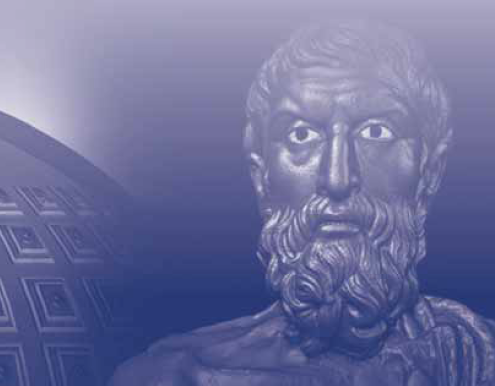Billed as first peer-reviewed journal supporting real-time, interactive presentation
CHARLOTTESVILLE, Va. – In launching the brand-new academic journal Digital Applications in Archaeology and Cultural Heritage (DAACH), Bernard Frischer, a professor here at the University of Virginia, had to overcome a number of hurdles.
The first was cultural: The new journal, for reasons that will become obvious, will be online only, with the first articles posted in the first half of this coming year. In the 1990s, the idea of an article posted online being accepted as a valid form of publication for academia was more than a little radical.
“In the 2000s,” said Frischer, who’ll act as editor in chief, “there was a lot of progress on that front. Major organizations issued policy statements that online should count just as much.”
With that out of the way, there remained a number of technical hurdles, chief among them: How to actually publish a real 3D model you can manipulate on the Internet.
“The big breakthrough there was Unity 3D,” Frischer said, “with its web player [designed for interactive 3D gaming, originally], and around that player could be text describing the model you were looking at.” Then came along WebGL, a Javascript API that allows for interactive 3D graphics in basically any modern web browser (essentially, any non-Internet Explorer browser) that’s HTML 5 compatible.
“WebGL helped with the object models,” Frischer said, “say a statue or an artifact. That was the final missing piece.” Frischer has even used WebGL to create a 3D version of YouTube called Seymour 3D, which helped him in the development of DAACH.
Also helpful was the work of the London Charter, a living document online outlining best practices for the use of 3D visualization in the research and communication of cultural heritage. With a working definition of what it takes for a model to be considered intellectually rigorous, there was a baseline Frischer could use for acceptable models for the publication.
“We’re adapting the Gutenbergian approach to the digital medium,” Frischer said.
Finally, there was one last hurdle: Who’s going to publish this journal? “I was shopping this thing around to academic presses in the United States,” said Frischer, “and I got not takers.” Which is perhaps not all that surprising. Academic presses are not known for their advanced multi-media publishing technology, nor for their risk-taking.
However, Frischer did land three National Science Foundation grants that helped keep the ball rolling, including one to conduct a needs assessment survey. Did the academic community actually study cultural sites using 3D data capture and modeling? Or was this still too niche to matter? And was there any kind of demand for an ability to publish in this way?
After hearing from more than 300 respondents, the results were encouraging: “The average person had already made a surprising amount of laser scan models,” said Frischer, “maybe 50 to 100. So I’d say there’s up to 1,500 people in the cultural heritage field around the world doing this kind of work.” Sure, that’s probably less than five percent of the total people working in archaeology and cultural heritage, but it’s a significant start.
It was enough, certainly, after just about every American university press said no over the course of about five years of development, for Elsevier to say yes. As a global provider of science and health publications with 7,000 journal editors, “they didn’t even blink,” said Frischer. “They just said, ‘Okay, this is how we see the scientific journal of the future.’” Instead of your standard periodical, where articles are grouped in monthly or quarterly editions, articles will just be posted when they’re ready, with subscribers promised a certain amount of information on a yearly basis.
Ultimately, the goal of the journal, like the goals of all the great academic journals, is to move the collective knowledge and understanding of the community forward. It will not simply be a place for the publishing of pretty models created of historically significant places, but each model will have to be accompanied by an article about the significance of the location or artifact and, most importantly, how the application of 3D technology led to specific insights or further understanding.
“Yes, these models are great illustrations of things that we already knew,” said Frischer, “but they’re also devices that can bring forth new information. That’s what’s really exciting about the journal: Not everything will be the heuristic approach, but that’s the really great scientific potential of 3D models; we can travel back in time, and do experimental history, and there’s no other way we can do that short of time travel.”






